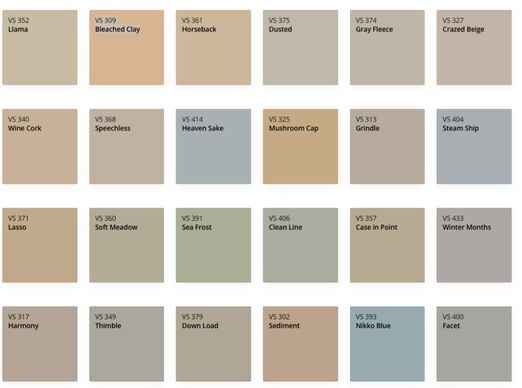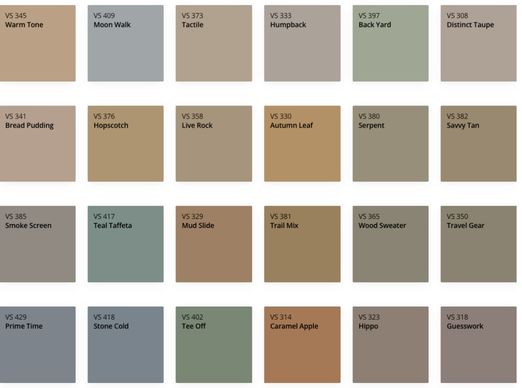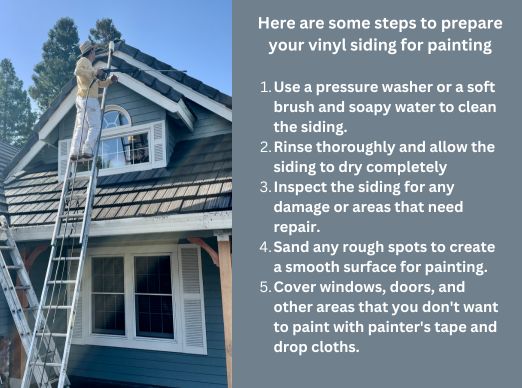Vinyl siding is a popular choice for many homeowners due to its durability and low maintenance. However, over time, it can start to look faded or outdated. One cost-effective solution to refresh its look is painting. But can you paint vinyl siding? Absolutely. With the right tools, techniques, and paint, you can give your home a fresh, new look. In this article, we’ll share essential tips and tricks for painting vinyl siding. From choosing the best paint for vinyl siding to mastering painting techniques, we’ve got you covered.
Understanding Vinyl Siding and Paint Compatibility
Before you start painting, it’s crucial to understand the compatibility between vinyl siding and paint.
Not all paints are suitable for vinyl siding. Some can cause warping due to the heat absorption properties of darker colors.
Selecting the Best Paint for Vinyl Siding
Choosing the right vinyl paint for your vinyl siding is a critical step in the painting process. The best paint for vinyl siding is 100% acrylic. This type of paint is known for its durability and excellent adhesion properties.
Here are some key factors to consider when selecting right paint for your exterior paint job and vinyl siding:
- ” value=”2″>Color Retention: The paint should maintain its color over time, despite exposure to sunlight and other elements.
-
Sherwin Williams offers a range of Vinyl Safe colors specifically designed for vinyl siding. These paints are formulated to prevent warping and other damage that can occur when vinyl siding is painted with darker colors.
Another excellent product from Sherwin Williams is the Duration for Vinyl Siding. This paint is known for its durability and ability to retain its color, making it a popular choice for homeowners painting their vinyl siding.
Preparing Your Vinyl Siding for Painting
Before you start painting, it’s crucial to prepare your vinyl siding properly. This involves cleaning the siding to remove any dirt, mildew, or loose paint. A clean surface ensures better paint adhesion and a smoother finish.
Here are some steps to prepare your vinyl siding for painting:
- Use a pressure washer or a soft brush and soapy water to clean the siding.
- Rinse thoroughly and allow the siding to dry completely.
- Inspect the siding for any damage or areas that need repair.
- Sand any rough spots to create a smooth surface for painting.
- Cover windows, doors, and other areas that you don’t want to paint with painter’s tape and drop cloths.
- ” value=”2″>Avoid painting in direct sunlight as it can cause the paint to dry too quickly, leading to uneven coverage.
- ” value=”2″>Pry bar
- ” value=”4″>Hammer and nails or a nail gun
- ” value=”6″>Level
Remember, thorough preparation is key to achieving professional-looking results when painting vinyl siding.
Checking the Weather: Ideal Conditions for Exterior Painting
When planning to paint your vinyl siding, it’s important to consider the weather. Ideal conditions for exterior painting are mild, dry days with temperatures between 50 and 90 degrees Fahrenheit.
High humidity or extreme temperatures can affect the drying process and the overall finish. Always check the weather forecast before starting your painting project to ensure optimal conditions.
Applying Primer: When and Why It’s Necessary
Primer plays a crucial role in the painting process. It helps the paint adhere better to the surface, providing a smooth base for the topcoat.
However, it’s not always necessary to use a primer when painting vinyl siding. If the siding is in good condition and the new paint is similar in color to the old one, you can skip this step. Always check the paint manufacturer’s instructions to make sure.
Painting Techniques for Vinyl Siding
Painting vinyl siding requires a specific technique to ensure a smooth, even finish. Start by applying the paint in a vertical direction, following the length of the siding. This helps to prevent streaks and drips, giving a more professional look.
Use a high-quality brush or roller for the application. A brush is ideal for smaller areas and edges, while a roller can cover larger areas more quickly. For the best results, apply the paint in thin, even layers.
Here are some additional tips to keep in mind:





